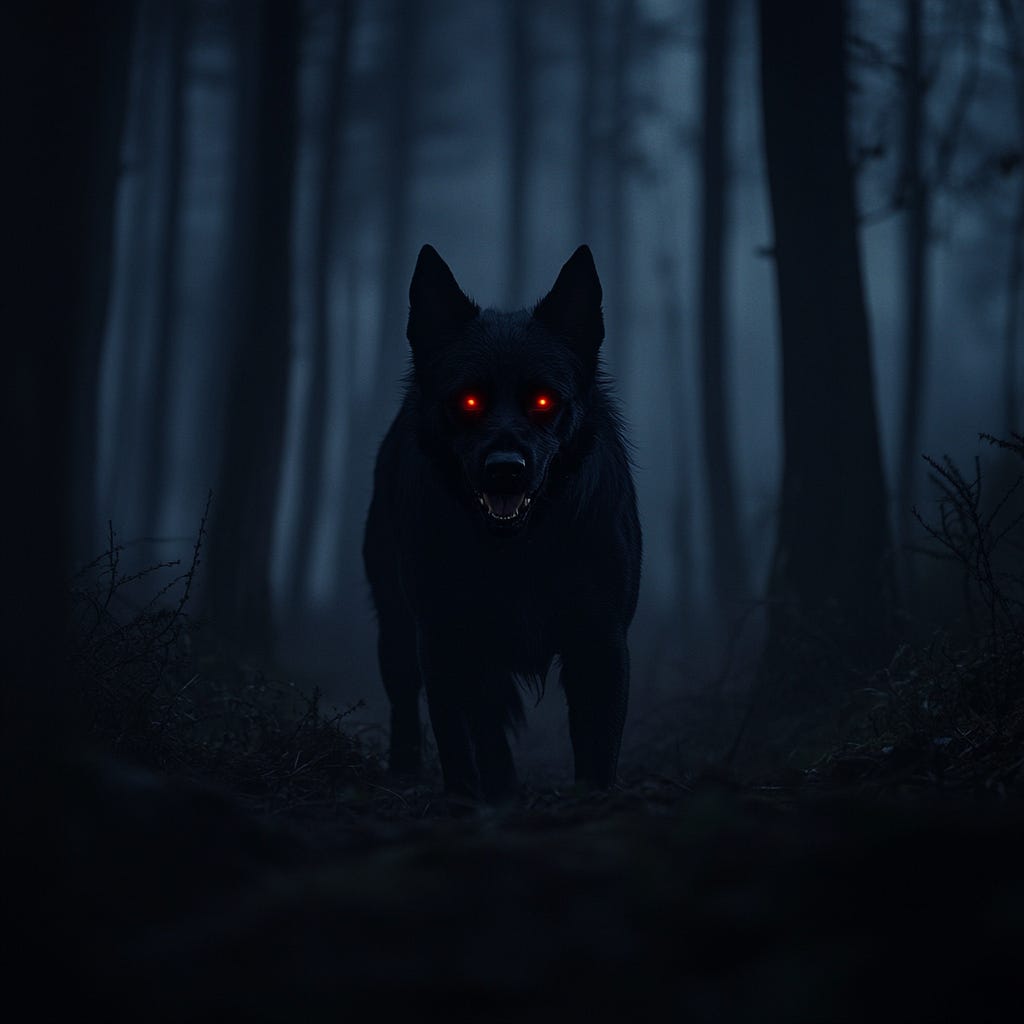Myth of the Day: Black Dog
A spectral, oversized canine with midnight-black fur and glowing red eyes, embodies dread and protection in British folklore.
Region/Culture: England, Northern Europe
Mythos: Celtic Mythology, also prevalent in British folklore
Primary Type/Nature: Undead/Cursed Beings
Mythical Attributes: The Black Dog is often described as a large, ghostly black canine with glowing red eyes.
Role in Mythos: The Black Dog serves as an omen of death and is considered to be a malevolent supernatural entity.
Relation to Humans: Encounters with the Black Dog are often seen as harbingers of doom, and the creature is generally considered to be a threat to human life. However, some folklore also attributes protective qualities to the creature, defending lonely travelers.
In physical terms, the Black Dog is a haunting figure. Picture a canine of considerable size, so large that it seems almost unnatural. Its fur is as black as midnight, and its eyes, oh those eyes, glow with a smoldering red hue, like burning coals in the heart of a dark forest. The sight alone has been enough to freeze many a stout-hearted individual in their tracks. A keen observer may also notice an ethereal quality to this beast. It’s not merely a dog; it is a phantasm, a shadow brought to life, almost as if stitched together from the darkest corners of the human psyche.
How did such a creature come into existence? The Black Dog is often understood as an undead or cursed being. Its origins are deeply embedded in Celtic mythology but have been adapted and retold across various British traditions. The lore suggests that the Black Dog was once perhaps a mortal creature, maybe even a loyal companion, cursed to wander the Earth in this malevolent form. Some tales even speak of it as a lost soul, damned to roam as a spectral canine as punishment for a life of sins. One thing is for certain: the Black Dog is not of this world, but rather an intruder from another, more mysterious realm.
In many narratives, the Black Dog takes on the role of an omen of death. To see it once may be a dire warning; to see it thrice often portends one’s doom. It lurks on lonely roads, near ancient crossroads, and in the ruins of old, crumbling buildings, appearing to lone travelers in the dead of night. Yet, its role is not strictly malevolent in every tale. Some stories suggest a more nuanced relationship with humans. In these instances, the Black Dog may act as a guardian, defending travelers from more malevolent forces that lurk in the darkness. This duality adds layers of complexity to its character, making it a figure that is both feared and, oddly, reassuring at times.
As for its powers, the Black Dog is not a creature to be trifled with. Often endowed with supernatural strength and agility, it’s said that its howls can be heard for miles, echoing like a mournful lament in the hearts of those who hear it. Its mere presence can induce an overwhelming sense of dread, paralyzing its victims with fear. Yet, despite these formidable abilities, the Black Dog is not without its limitations. Like many cursed beings, it is often bound to specific locations or tethered to the performance of particular tasks. It can’t be everywhere, and its powers are subject to the rules of its curse or origin.
In conclusion, the Black Dog serves as a fascinating example of how folklore evolves to reflect the complexities of human emotion—our fears, our hopes, and our understanding of the supernatural world. As an omen of death and a malevolent entity, it instills dread, yet in some narratives, it also offers protection, proving that even in the darkest of myths, there is often a flicker of light.
Suggested Further Reading
Explore more myths and wonders by visiting godsandmonsters.info.
Enjoy mythic tales on the move with our podcast, Five Minute Mythology.





